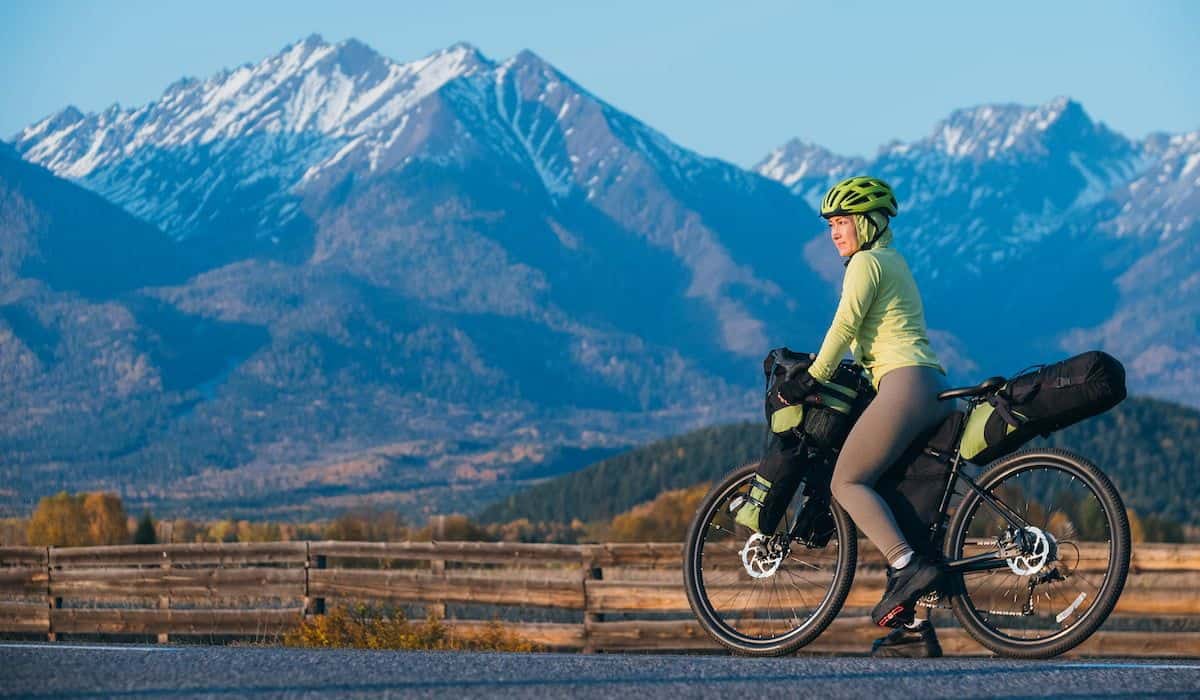The 4×4, all-wheel drive was a real game-changer when it came to outdoor exploration and off-road travel. This vehicle opened up the possibility to explore areas of this planet that would otherwise be something that involved months of planning and commitment, not just a weekend trip with your tent in the back.
While off-road exploration and camping became an accepted and exciting weekend hobby, a subsection of this has become increasingly popular in recent years and this new leisure activity is better known as bikepacking.
Those who like backpacking around woods, forests, and mountains to really explore the great outdoors now have a very unique rival in bikepacking. This is a hobby for those that love the outdoor lifestyle but would rather not spend their time trekking to get around it.
If you want a minimal and efficient way to really explore your surrounding areas, then bikepacking could be the hobby that you never even knew existed!
What Is Bikepacking?
Firstly, a strong distinction needs to be made between bikepacking and cycle touring as the two are very different activities. Cycle touring is typically an on-road pursuit that involves visiting new cities, towns, and places and is a form of vacation (though it can be a single trip or weekend endeavor as well).
Bikepacking on the other hand is an off-road pursuit that requires a lighter load in terms of equipment along with a more rugged and hardwearing bike. Bikepacking is for bike riding enthusiasts and the focus here is more on bike riding in new destinations with a small requirement to camp out when required.
Cycle touring is more for those that want to explore new places and they usually just use a bicycle as their chosen form of transport.
Bikepacking is more for those that just want to ride their bike in new areas and therefore they want to carry a minimal amount of equipment that is as light as possible.
There is not a clear distinction between the two and it is open to individual interpretation but bikepacking is essentially a subsection of cycle touring.
Bikepacking involves doing long duration cycles of 1+ days (usually in off-road terrain) and sleeping/camping out along the way.
It’s really quite a simple hobby when you narrow it down to the basic concept but cycling in new areas in nature and sleeping out under the stars and waking up to the sun are what set this hobby apart from any other.
If you appreciate the outdoors in any way and also like to cycle for exercise or to explore then bikepacking really could be the perfect hobby for you to consider.
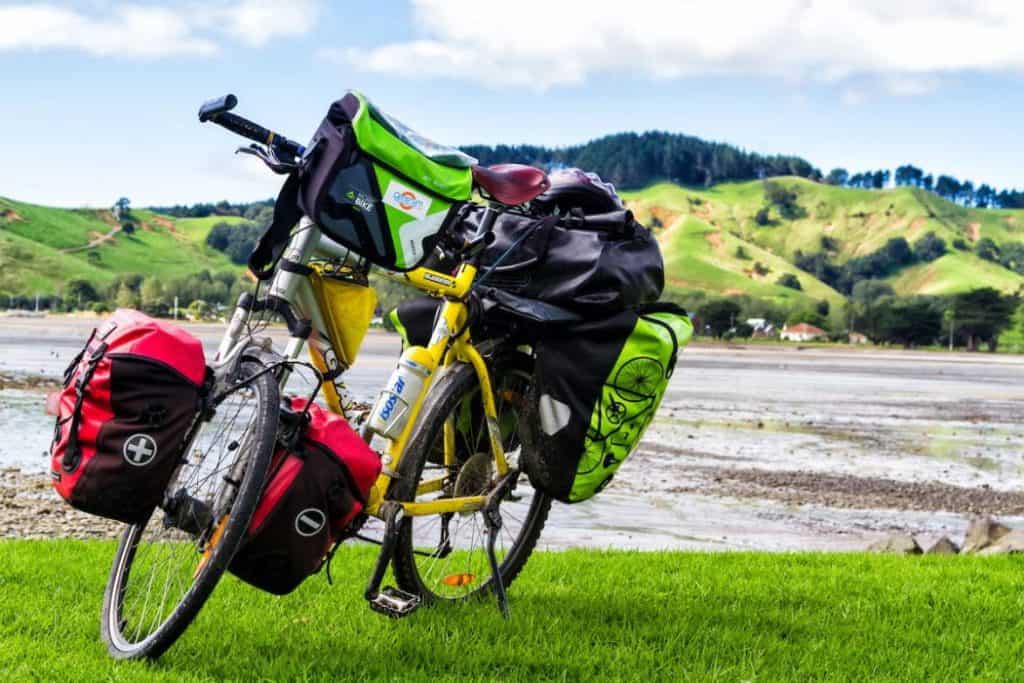
Who Is Best Suited to Bikepacking?
There are no restrictions to who can go bikepacking, but there are certain personality traits that will impact whether or not you will enjoy bikepacking as a viable hobby.
Firstly, enjoying cycling and having a reasonable level of fitness is recommended. Bikepacking is not usually your easy-going ride along a designated cycling route, it’s usually a challenging ride through new and untested terrain off the general beaten track.
It’s about exploration and travel and with that comes the need to enjoy cycling and also be able to handle some long duration cycles.
Secondly, you need to be able to appreciate and enjoy nature (both the pleasant sunshine but also the unforgiving rain and wind). Bikepacking is part cycling, part camping, and therefore sleeping outdoors and being comfortable out in nature is a must.
If you like the home comforts of your comfy sofa by the fireplace with the latest Netflix season on, then the thought of cycling to a new location and sleeping under the stars could be better than the actual reality.
The weather will not always provide the perfect conditions and therefore you need to be both comfortable and happy staying out in a range of weather conditions.
Finally, you will need to invest quite a bit of money upfront in order to get the equipment needed for long-duration bikepacking trips.
This is not the cheapest of outdoor hobbies and the fact that it’s trending so much currently, means that companies are cashing in on the popularity with expensive products and accessories.
While this hobby is open to just about anyone, we’d recommend it more for those that like adventure, spending time outdoors (in all weather conditions), have few commitments in their home life like pets or young children (though a few day trips are still more than viable) and most importantly, enjoy bike riding.
What Equipment Will I Need to Get Started?
Bikepacking has very different requirements in terms of gear and equipment to what you might expect and there are specialist items that are designed solely for bikepacking. If you’re looking to get started in bikepacking, it’s important to know that it won’t be a cheap activity.
We’ll cover some of the costs shortly but just to give a better idea of what you might need when getting into bikepacking, below are some of the main products that you’ll need.
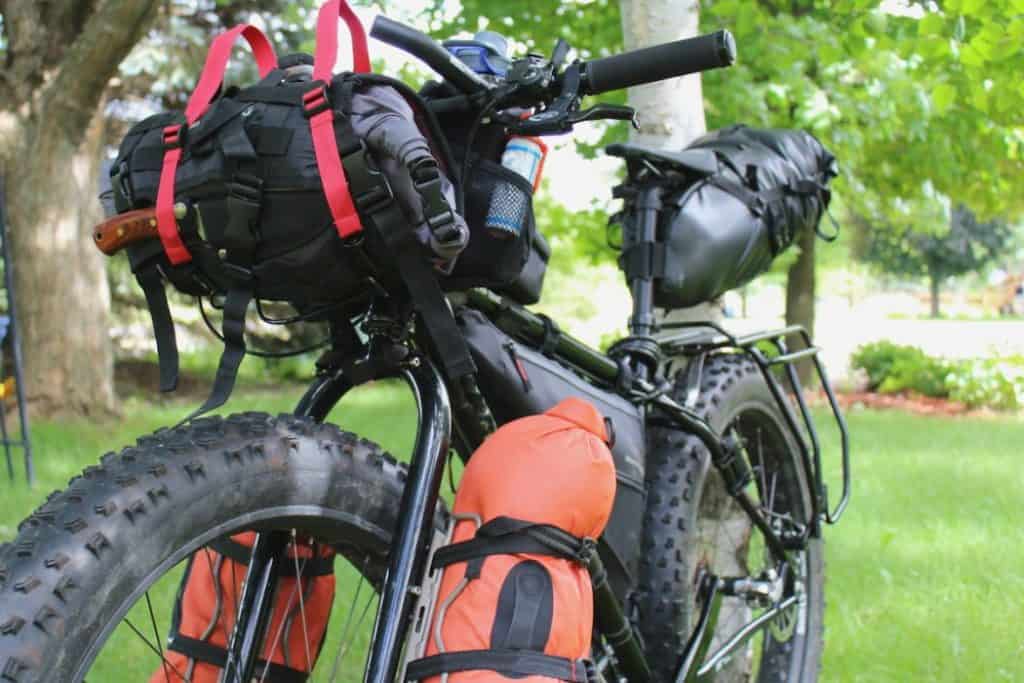
Bike
The most important product that you’ll need is a decent bike. Decent doesn’t mean expensive but considering the environments that you’ll most likely be riding (off-road, rocky, hilly, bumpy, wet), a bike is an important investment into this hobby.
Depending on the terrain you are considering adventuring into, a good quality mountain bike with front and rear suspension, large traction tires (that are also quite thick to aid suspension), a solid frame, and good design mechanics are all essential requirements.
The range of bikes available is far too great to cover in this article but what we will say is that look for a lightweight bike. This will be a recurring theme when it comes to bikepacking but the less weight you have, the easier your trips will be.
You will undoubtedly come across some unrideable terrain on your journey and in these instances, there is nothing worse than trying to pull a heavy bike along that also has equipment strapped to it for some additional weight and bulk.
Modern technology means that bikes are now lighter and more rugged/durable than ever and investing in a good-quality bike is something you should have as a top priority once you get into this hobby. You don’t need one instantly, but it could be the difference between a great riding trip taking in wonderful scenery or a fitness challenge that leaves you exhausted and missing the wonders around you.
Luggage
This may seem like strange terminology, but luggage essentially refers to the “packing” section of bikepacking. A backpack can be considered luggage, and this is normal for those that are hiking or camping but bikepacking is a bit different in terms of transportation kit.
Bikepacking is now a very trendy hobby that has boomed in the last 10 years. With popularity, comes paying customers, and with paying customers comes product innovation. The investment by manufacturers into lightweight, functional, and minimalistic gear means that modern-day bikepackers are spoiled for choice.
Panniers are good for commuting into work but the storage and luggage options for bikepacking are on another level. Some of the products you are going to want to look into are:
- Saddle packs
- Handlebar packs
- Frame packs
- Backpacks
- Sleeping bags
- Tents (depending on your location)
All of these products are designed to be universally fitting for mountain bikes, road bikes, and even general commuter bikes. They are designed to cover the requirements for bringing food, shelter, and sleep whilst being lightweight and compact to easily navigate tough terrain without being weighed down.
They get strapped tightly to the bike and are designed to be aerodynamic for reduced wind drag and easier riding.
Accessories
Accessories are another important thing to consider when getting started in bikepacking and the items you need will depend on the duration of your trip. An overnight trip that involves sleeping under the stars will have far fewer requirements than a multi-day trip across multiple regions and terrains.
Some accessories you will require include:
- Basic first aid kit (usually the most neglected item)
- Bike puncture and repair kit (including a spare inner tube)
- Fluids (500ml – 1L water flask)
- Cooking utensils (this will depend on your trip and can range from basic can openers to small hobs and pop-up fire pits)
- Toilet roll or baby wipes (camping essential!)
- Lightweight and nutrient-rich food (include both slow-digesting carb sources and also snacks like trail mix)
- Small multi-tool
- Waterproof clothing
- Navigation system
- Sun protection and toiletries
This seems like a long list and you will, of course, need to customize it based on your own requirements but the interesting aspect of bikepacking is that most of these items are readily available in lightweight and compact sizes and are specially made for bikepacking.
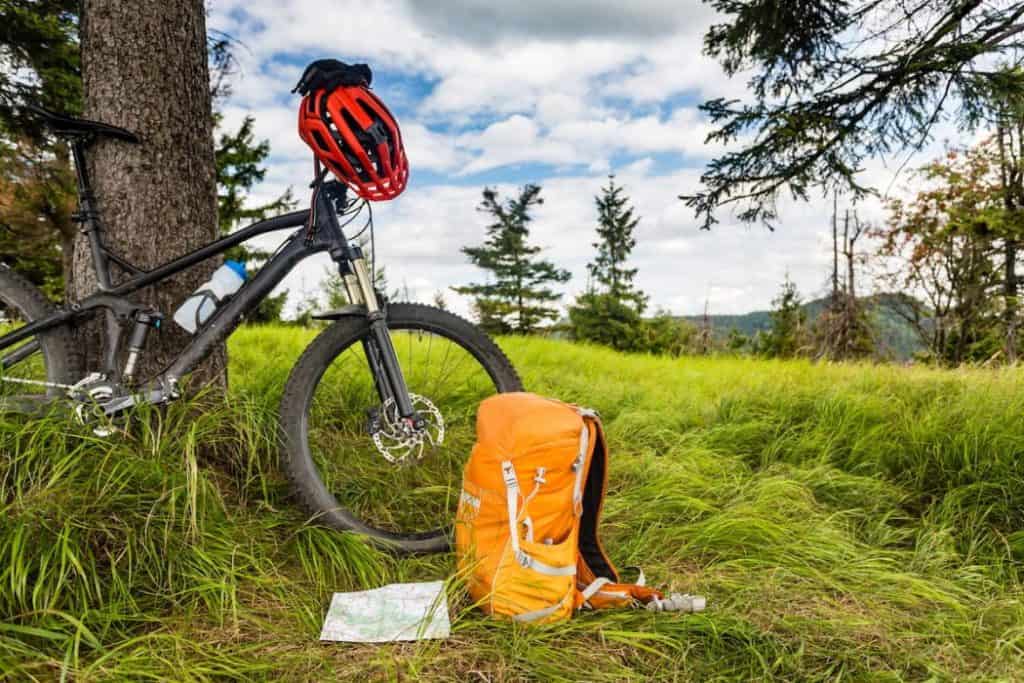
How Much Will It Cost?
We briefly mentioned earlier that specialist equipment and a general requirement for good quality products are near essential for this hobby.
While this may seem expensive, we don’t want to put people off; bikepacking can be done cheaply but the most important point to make is that most of the cost is an initial upfront cost. If you get into a hobby or travel-based sport, the costs are usually recurring and ongoing.
With bikepacking though, once you have bought all of the initial items that you’ll need, the cost of each trip into the mountains is then negligible to non-existent from that point onwards.
This is an important distinction to make as the upfront cost of a bike might seem expensive, but the bike could then last you several years of optimal use.
A gym membership for example is a cost that you incur each month and over several years could easily outweigh the cost of bikepacking. Therefore, while bikepacking doesn’t seem to be a cheap hobby initially, a quick mindset shift means that the upfront cost is offset by the long term use you then get out of it.
Now that we’ve covered that point, the actual cost of bikepacking can range from a couple hundred $$ to $1,000-$2,000+ depending on a range of factors.
This will depend on the quality of bike you opt to purchase, the number and quality of accessories you purchase (some people will take a backpack whereas others will load up their bike with every type of pack available), and also how you make the most of your bikepacking experience.
Making use of hostels and eating out on your trip will substantially increase the cost but as we’ve mentioned, after purchasing the initial equipment, a day trip could only incur the cost of the food you bring along and can essentially be done for free if you are thrifty.
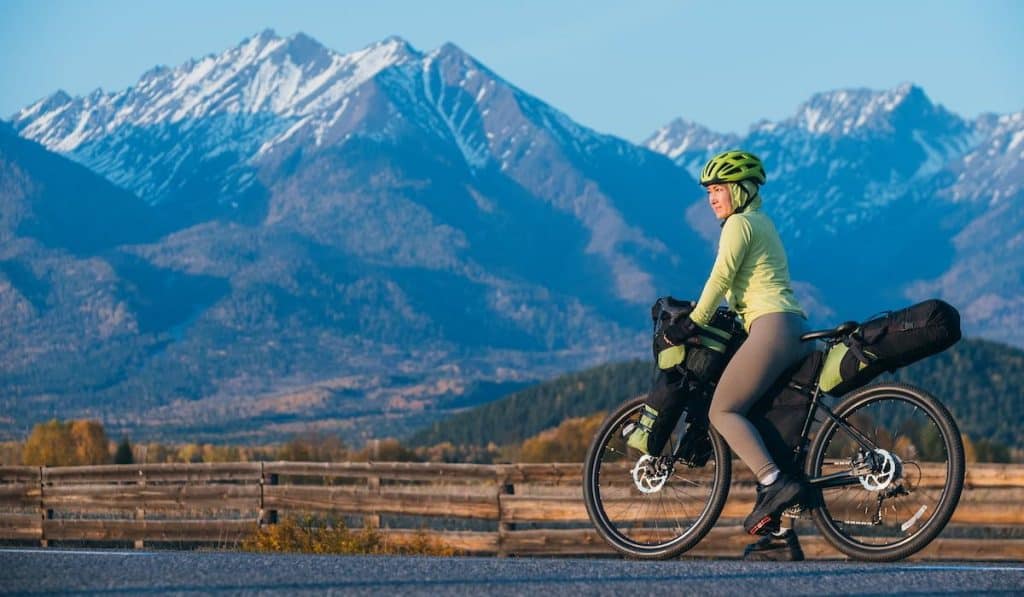
Tips for Successful Bikepacking Trips
Ok, so you’re all pumped to set off on your first bikepacking adventure. You’ve got all the gear, planned out your route, and are ready to take some pictures that will take your Instagram account to the next level but before you get too carried away, there are some tips to keep in mind.
Take it slow – Bikepacking can be a tiring endeavor for beginners, especially if you end up on a route that is unexpectedly grueling with challenging off-road terrain or steep hills that test your physical fitness. Therefore, when starting out you want to pick an easy route and get used to the process.
Trying routes that are too difficult too early is a sure way to kill your enthusiasm for the hobby and will see you give up before you really get to appreciate the endorphin hits that come with bikepacking. Take it slow and easy to start with and gradually work your way up to more adventurous routes and longer trips over time.
Start basic – While the equipment range is extensive, all you need for your first trip is a backpack with supplies, your bike, and a sleeping bag (and a very small pop-up tent depending on where you are in the world). Some bikepacking waterproof bags are designed to hold a tent and sleeping bag and keep them dry.
This ties in with taking it slow, to begin with, you don’t need all the top end gear to get started and it’s much better to take an easy route and experience a bikepacking trip with the bare essentials to see how much you enjoy and resonate with the activity.
Keep the weight on the bike – The less weight you need to carry on your body, the easier your trips will be. As we’ve mentioned, the equipment can now be stored in a number of areas on the bike and this will significantly reduce fatigue and allow for an easier ride.
The experts in this area claim that the skill is actually in taking the minimal amount required. The more opportunity you give yourself to take more items, the harder the ride will be and ultimately the less enjoyable.
Everything comes back to being ultra-lightweight and resourceful, only bring the bare requirements and try to keep them strictly on the bike (especially for long-duration rides).
Have a navigation system in place – By navigation system, we mean to keep a set route in mind and also have some navigation tools just in case you veer from your planned route. By set route, we don’t mean that it needs to be strict but have a general route laid out with an endpoint and some known landmarks in between.
Exploration is good but ending up lost is a serious issue. Therefore, also look for a plan B and bring a map and compass just in case. This can be seen as unnecessary weight alongside a mobile phone which has all of this pre-loaded but once you take more serious routes, you need to be prepared for the worst-case scenario of getting lost.
In Summary
If you have a love for the great outdoors and wish you could explore it at a much quicker pace than what is possible with trekking or hiking, bikepacking may just be the ideal pastime and hobby that you are yet to try out.
While you will need some decent equipment to get started, this is the only real barrier that you need to take into consideration and there are certainly ways to get started on a budget and improve your gear over time.
Bikepacking is only growing in popularity and with the innovation in gear and the greater community around the hobby, there has genuinely never been a better time to get started.

